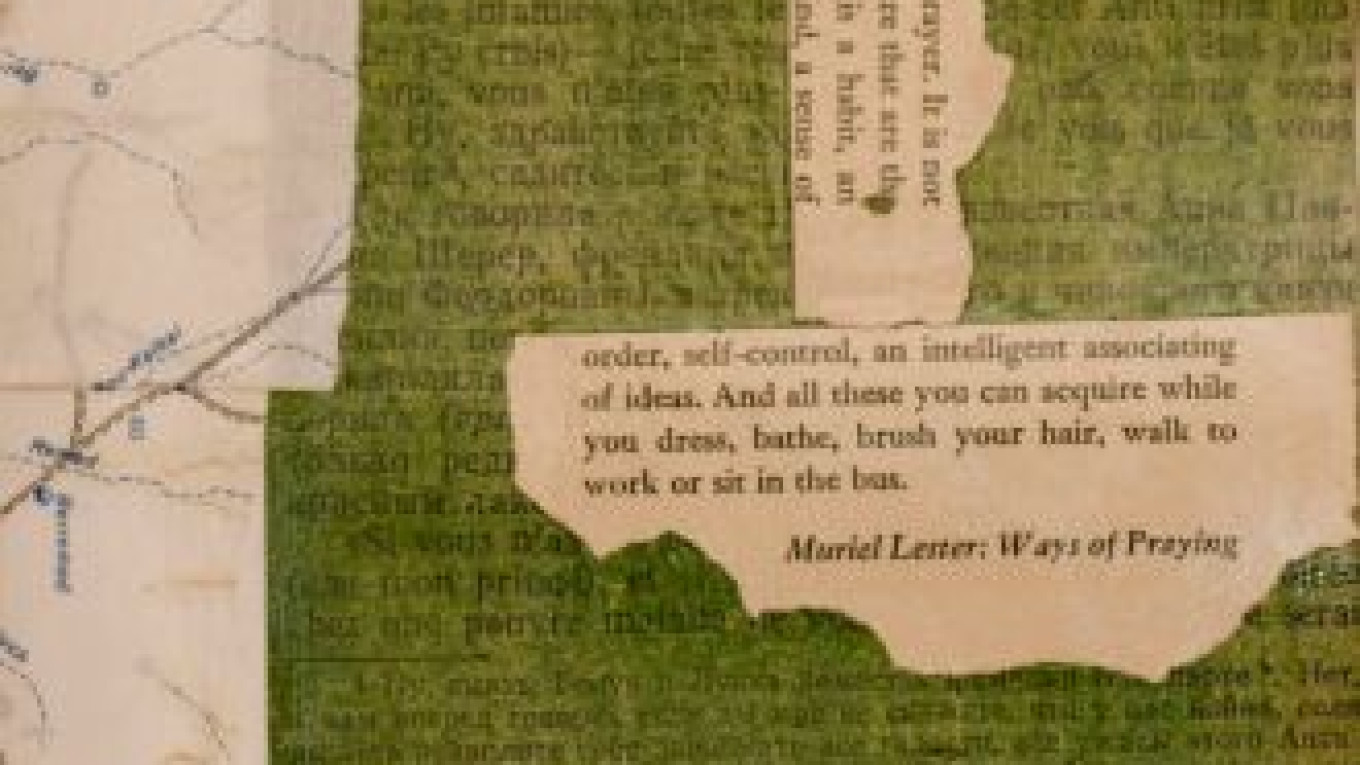When American artist Lola Baltzell discovered she had breast cancer in 2009, she began treatment and started an art project that is now on show in a gallery in the town of Tula.
Baltzell and a group of artists from America and Europe are showing their collection of 747 collages at the gallery, each page corresponding to a pair of pages from Leo Tolstoy's classic, "War and Peace."
"I estimated that I had to stay alive two and a half years to finish this thing. And I thought that would be a good goal because statistically that's about what I'd got [left]," said Baltzell, who is in remission now, in an interview at the Yasnaya Polyana gallery.
Baltzell picked Tolstoy's sprawling masterpiece because, she said, of her long interest in Russian culture — she has Russian roots and studied Russian at college.
Once she started, she saw the project grow to match its source in size.
"It's such a huge story: male, female, French, Russian. [The project is] sort of a metaphor in a sense for the broadness of it," she said.
The works, all the same size, seven-by-five inches, are arranged in the order that the texts they are based on appear in the book. They use texts from a 1970s publication of "War and Peace" in Russian. Many of the artists do not speak Russian but found the appropriate passages in English before tracking down the Russian version.
For one of Tolstoy's essays about the ability of one man, like Napoleon, to marshal hundreds of thousands of people to go to war, American artist Trish Crapo used images of crowds and the face of Durga, a Hindu warrior goddess.
Baltzell's collage of the famous scene where Natasha watches an opera uses a lot of the original text, but also features a torn page of sheet music dyed deep red.
"Visual arts is a language of its own. You can't really go in and make pictures mesh completely with what's written in words," said Lars Hoeg, a Danish artist who made one collage. "But if you work in a modernistic way, they can match the text."
As part of the project, some of the artists visited Tolstoy's estate and dried flowers from Russia were then incorporated into some of the collages.
Otto Mayr, a German artist, made twenty collages for the exhibition. One collage is based on the pages where Pierre rearranges the letters of his name so they numerically add up to 666, giving Pierre the idea to kill Napoleon. Mayr made a colorful mash-up of occult images along with religious symbols like a picture of a pope.
Some might have had fears that the Russian side might not take too kindly to seeing copies of "War and Peace" torn up but there has been only encouragement.
Yelena Petrova, head of the International Relations Office at Yasnaya Polyana, said she "liked the project from the very start."
"Only people who love books would be interested in making these collages," said Petrova, who helped bring the exhibit to Russia and held a workshop at the gallery, which is affiliated with Tolstoy's family estate of Yasnaya Polyana, where participants made their own collages.
"Cutting books at the literary museum — it seems strange and unexpected," Petrov said.
For Baltzell, the process has been an invigorating one. "Having cancer woke me up. … This project and seeing it through has been really energizing," she said.
"The War and Peace Project" runs through July 22. Yasnaya Polyana Gallery, 12 Oktyabrskaya Ulitsa, Tula. Tel. (4872) 473-580.
A Message from The Moscow Times:
Dear readers,
We are facing unprecedented challenges. Russia's Prosecutor General's Office has designated The Moscow Times as an "undesirable" organization, criminalizing our work and putting our staff at risk of prosecution. This follows our earlier unjust labeling as a "foreign agent."
These actions are direct attempts to silence independent journalism in Russia. The authorities claim our work "discredits the decisions of the Russian leadership." We see things differently: we strive to provide accurate, unbiased reporting on Russia.
We, the journalists of The Moscow Times, refuse to be silenced. But to continue our work, we need your help.
Your support, no matter how small, makes a world of difference. If you can, please support us monthly starting from just $2. It's quick to set up, and every contribution makes a significant impact.
By supporting The Moscow Times, you're defending open, independent journalism in the face of repression. Thank you for standing with us.
Remind me later.


